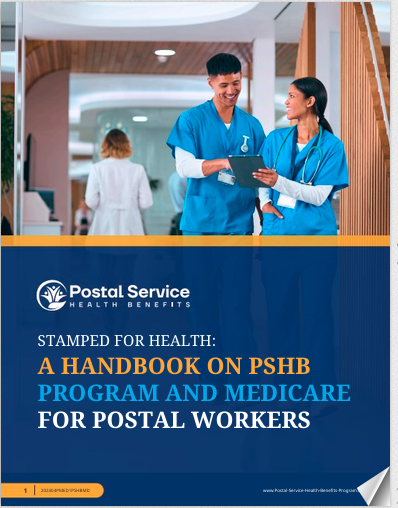Key Takeaways
-
In 2025, Medicare Part D introduces a $2,000 annual cap on out-of-pocket drug costs, fundamentally changing your potential healthcare expenses.
-
While the cap offers significant protection, other costs such as premiums and drug costs prior to reaching the cap still demand careful budgeting.
How the 2025 Changes Transform Medicare Part D Costs
Starting in 2025, a major shift in Medicare Part D rules reshapes your prescription drug costs. For the first time, there is an annual $2,000 out-of-pocket limit on what you pay for covered drugs. If you are a Postal Service retiree or worker enrolled in a PSHB plan, and you have Medicare Part D coverage integrated through your PSHB plan, this change directly affects you.
You are no longer subject to unlimited drug costs after the catastrophic phase, as was the case before 2025. Once your total out-of-pocket spending on covered drugs reaches $2,000 within the year, your plan will cover 100% of your drug costs for the rest of the calendar year.
Why the $2,000 Cap Matters to You
The $2,000 annual limit means greater financial predictability and relief, particularly if you use multiple or expensive medications. Before 2025, many beneficiaries experienced the uncertainty of how much catastrophic coverage would still cost them, even after extensive spending. That burden has now been lifted.
For PSHB participants, this new cap helps:
-
Control yearly spending more effectively.
-
Prevent unexpected drug costs later in the year.
-
Improve budgeting for medical expenses, especially for retirees with fixed incomes.
Understanding What Counts Toward the Cap
Not every dollar you spend counts toward the $2,000 limit. The following payments are included:
-
Your deductible (if applicable)
-
Copayments
-
Coinsurance amounts
Premiums, however, do not count toward this cap. Even after you hit $2,000 in out-of-pocket drug costs, you must still continue paying your Part D plan premium if it applies to your PSHB coverage.
The Three Phases of Medicare Part D in 2025
In 2025, the traditional Part D “donut hole” is fully closed. Instead, Medicare Part D now follows a straightforward three-phase structure:
1. Deductible Phase
You pay 100% of your drug costs until you meet your plan’s deductible. The maximum deductible allowed under Part D in 2025 is $590. PSHB plans linked to Medicare Part D generally structure deductibles to stay within these limits.
2. Initial Coverage Phase
After meeting the deductible, you share costs with your plan through copayments or coinsurance. This phase continues until your total out-of-pocket spending on covered drugs reaches $2,000.
3. Catastrophic Coverage Phase
Once you hit the $2,000 cap, you pay nothing for the remainder of the year for covered drugs. The plan takes over 100% of your medication costs.
How Your PSHB Coverage Coordinates with the New Part D Limits
If you are enrolled in a PSHB plan that integrates with Medicare Part D, you automatically benefit from the $2,000 cap. Your PSHB prescription drug benefits are provided through a Medicare Employer Group Waiver Plan (EGWP), which aligns with the new Medicare rules.
Important things to know:
-
Automatic Enrollment: You do not need to take additional action to access the cap if you are already enrolled.
-
Prescription Costs: Your pharmacy receipts and Explanation of Benefits (EOB) statements will track your spending toward the $2,000 limit.
-
Plan Support: PSHB plans continue offering mail-order and retail pharmacy options that can help you manage medication costs before reaching the cap.
What Happens if You Opt Out of the PSHB Part D Drug Plan
If you decline the Part D drug coverage offered through your PSHB plan, you will lose drug coverage entirely under PSHB rules. You would then need to purchase a standalone Part D plan elsewhere — and these might not offer the same integration benefits as your PSHB plan.
Important reminders:
-
No Opt-In Later: If you opt out, you generally cannot rejoin the PSHB Part D plan later.
-
Limited Drug Access: Declining coverage could leave you paying full price for prescriptions.
Additional Costs You Still Need to Budget For
While the $2,000 limit provides major protection, it does not eliminate all costs. You still must budget for:
-
Monthly Part D premiums (varies by PSHB plan)
-
Deductibles (up to $590)
-
Cost-sharing during the initial coverage phase
Planning ahead ensures you avoid surprises, especially in the first half of the year before you hit the cap.
Impact of High-Income Adjustments on Drug Coverage
In 2025, higher-income retirees and workers may still pay an Income-Related Monthly Adjustment Amount (IRMAA) for Part D. This surcharge applies separately from the $2,000 out-of-pocket cap and is based on your 2023 income.
IRMAA for Part D in 2025 can range from about $12 to $77 per month in addition to your plan’s premium, depending on your income tier. These extra payments do not count toward your $2,000 out-of-pocket limit.
How to Track Your Progress Toward the Cap
Your PSHB Part D plan will help you monitor your drug spending by providing monthly Explanation of Benefits (EOB) statements. These documents show:
-
How much you have paid out of pocket so far
-
How close you are to the $2,000 limit
-
How much remains before you reach full drug coverage
Checking your EOB statements regularly keeps you aware of your status and can help prevent overpayment errors.
Strategies to Manage Your Drug Costs Under the New Cap
The new $2,000 limit opens the door for smarter drug cost management strategies, including:
-
Use mail-order options to get 90-day supplies for chronic medications, which can lower overall costs.
-
Request generic alternatives whenever available.
-
Synchronize refills so you avoid overlapping or missing doses.
-
Consult your PSHB plan’s formulary to ensure your medications are preferred and cost less.
Your PSHB plan’s customer service and licensed agents listed on this website can also provide detailed help.
Timeline for 2025 Part D Spending
Understanding when major expenses typically happen can help you prepare:
-
January to March: Highest costs, as you work through your deductible and begin initial coverage.
-
April to August: Gradual spending, unless high-cost drugs are prescribed.
-
September to December: Many beneficiaries hit the $2,000 cap during this period and pay nothing for covered drugs afterward.
If your drug needs are predictable, you may even reach the cap earlier in the year, giving you many months of zero drug costs.
How the 2025 Part D Changes Support PSHB Members
The Medicare Part D redesign in 2025 directly benefits PSHB members by:
-
Providing cost certainty with a known out-of-pocket maximum
-
Eliminating the unpredictable catastrophic phase
-
Protecting against soaring medication expenses
For retirees living on a fixed budget and active employees managing healthcare costs, this change strengthens your overall financial security.
Preparing for Annual Updates Beyond 2025
Medicare regulations often evolve year by year. While 2025 brings a $2,000 cap, future years may adjust deductible amounts, premiums, or cost-sharing thresholds.
Every fall during Open Season (November to December), review your PSHB plan’s drug coverage updates. Staying informed ensures you continue getting the best value from your benefits.
Why Staying Enrolled in PSHB’s Integrated Part D Plan Makes Sense
Choosing to remain enrolled in your PSHB drug plan offers major advantages over seeking standalone Part D options. Your PSHB plan is designed to coordinate with your overall health benefits, minimizing gaps in coverage and supporting more seamless claims handling.
The $2,000 out-of-pocket limit is just one more reason to appreciate the integrated protection your PSHB plan provides in 2025.
Take Control of Your Drug Costs with Expert Support
The 2025 changes make prescription drug costs more manageable, but navigating the details can still feel complex. If you have questions or need help understanding how your PSHB plan coordinates with Medicare Part D, reach out to a licensed insurance agent listed on this website.
An expert can walk you through:
-
Reviewing your current plan benefits
-
Understanding your expected drug costs
-
Planning for the 2025 and future Medicare updates
Being proactive ensures you make the most of the new protections available to you.







